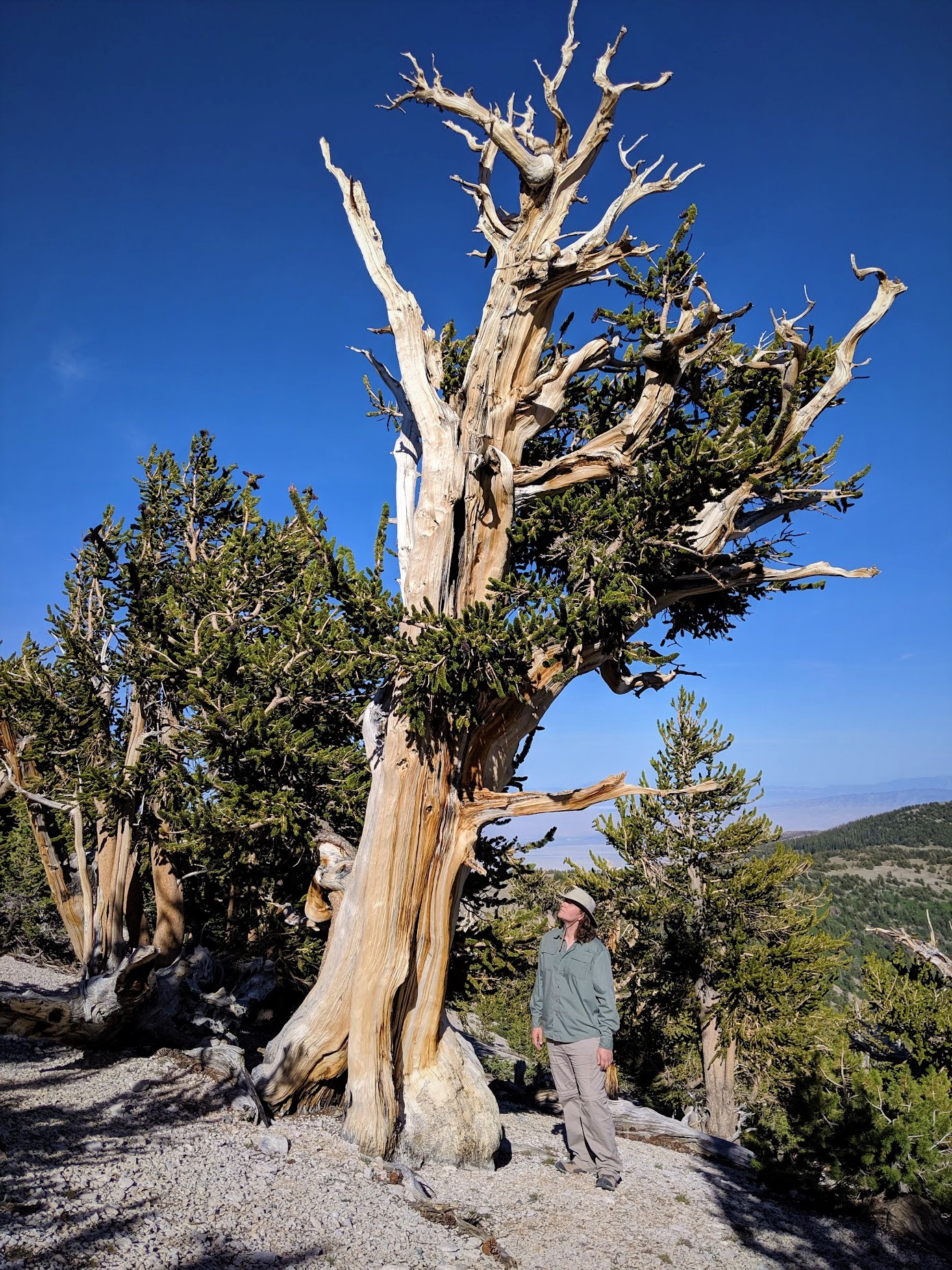
Q&A with Quinn Lowrey, High-Five Pine Photographer and Artist
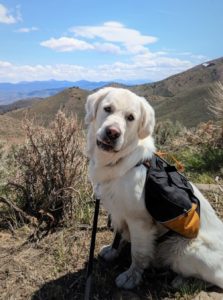
Quinn’s hiking companion Redmond (aka “Buddy”) who helps him scout the best trees
Meet photographer and artist Quinn Lowrey who currently lives in Reno, Nevada, but grew up in Grass Valley, California, within the Sierra Nevada foothills. His interests all revolve around nature and art, with a particular fascination for trees and geology. Quinn and his hiking buddy, Redmond the dog, scour the mountainous landscapes of the West in search of extraordinary high-elevation, five needle white pine trees as photographic subjects. And when he’s not out hiking, you can usually find him making art, mostly pottery and music these days.
Over the years, Quinn has contributed countless images for use by the Whitebark Pine Ecosystem Foundation, inspiring new generations of high-five pine conservationists through his striking tree portraits. For Nature Photography Day, we reached out to Quinn to learn more about his love of photographing high-five pines and the inspiration he draws from these majestic trees to create his abstract pottery masterpieces. You can also view more of Quinn’s photography and ceramic work on his Instagram accounts (@quinnlowrey and @quinnlowrey_ceramics) or visit his Etsy shop.
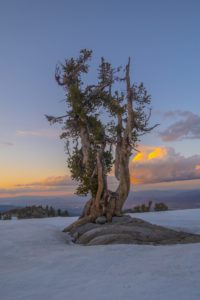
Whitebark pine at sunset in the northern Carson Range of the Sierra Nevada (Photo by Quinn Lowrey)
Q: How did you get into taking photos of high-elevation, five-needle white pines? What is it about these trees that fascinates you?
I’ve long been fascinated by trees. I really took to photography while studying film in college, and through a perennial compulsion to hike and explore, I encountered many exceptional whitebark, foxtail and Great Basin bristlecone pines in my area. However, I think it was through the art of bonsai that I came to really understand and appreciate the nuances of trees, their form, speciation and how they grow.
Growing at the subalpine limit, these trees are the purest representation of perseverance and strength. Every tree is an expression of time and struggle; they do not hide their past but wear it openly in the exposition of their form. Every harsh winter or brutal summer is recorded in the way the tree grows through its reaction — often over decades, centuries and even millennia — and the tree itself becomes an articulation of the environment.
Those in this unforgiving landscape that have it easy, simply aren’t as interesting to study, grow too fast and die young. Those that survive proudly wear resilience and ultimate vitality in stripped bark, bleached wood and twisted trunks with unparalleled survival in the most extreme and inhospitable of environments, by defining the tree line of the mountains they chose to inhabit.
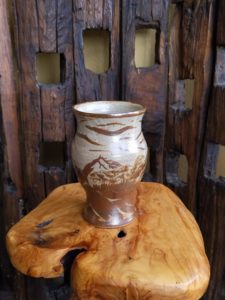
Quinn uses his photographs as inspiration for ceramic works
Q: When did you start doing pottery work? And how do you use your photos for inspiration related to this artform?
I started pottery in high school but took a more serious interest in college. I originally used my photography as a reference in oil painting landscapes (think Bob Ross and “Happy Trees”), but when I took up ceramics again several years ago, I quickly looked to find a way to incorporate my love of painting trees into my pottery. Japanese aesthetics, including adjacent artforms like sumi-e (i.e., ink painting) and bonsai, are a natural integration.
These days, it’s hard for me to go out hiking and not want to put every tree I see on a vase or mug. I often incorporate geology and found wood or petrified wood as tools and textures in my more abstract forms.
Q: How do you hope sharing your photos for WPEF use will help advance conservation and protect these trees and landscapes?
It’s been very sad for me to see, even in just the last decade, how many of my favorite trees have succumbed to disease, pests and drought. I hate to think of how many trees have already been lost in recent history, but even worse, that it’s a possibility that many of these trees could cease to exist in my lifetime. I would hope my photos can help WPEF in their goals to bring about conservation, restoration, education and awareness to these very real threats.
Ultimately, I want future generations to be able to take the same inspiration and meaning from these extraordinary lifeforms, or at the very least, have the privilege and opportunity to experience them as I have.
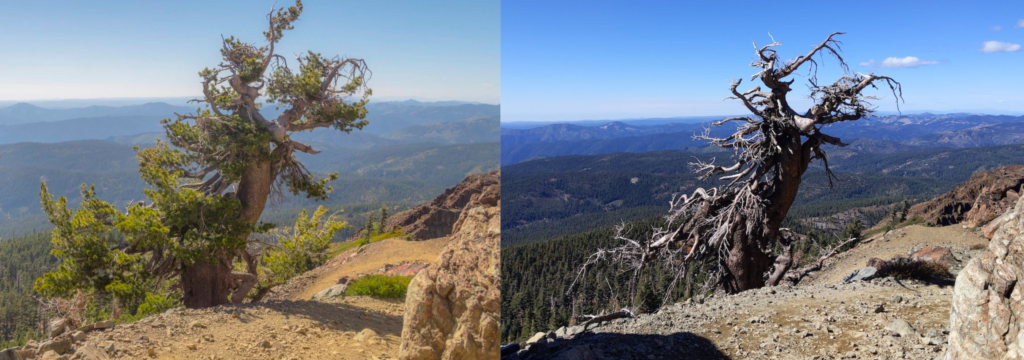
Quinn hopes his photos can help raise awareness of the ecological threats of high-five pines and the need for their conservation. Left: One of his favorite whitebark pine trees on the Sierra Buttes in the Northern Sierra Nevada, California; Right: Same tree that has died since he first started photographing it.

